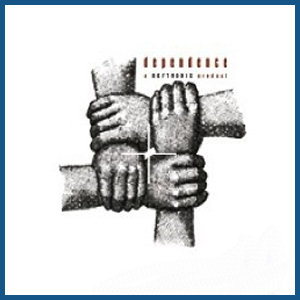Students sat quietly, appearing to be thinking deeply about the different connections between the game and ecosystems. Students then threw out different answers, attempting to hit pay dirt. Some of the answers were pretty insightful. However, I have to admit my favorite answer came rather straightforwardly: “I don’t know, you haven’t taught us that yet.”


After the class brainstorming session, Jenkins prompted the class to think about what the words international, interact, and interracial have in common. The students singularly responded with “inter.” With more prodding, the students came to the conclusion that they all have to do with something happening “between” other things. Now, the lights seemed to
go on in a few more heads. There is something to do with "between" in both the video game and in ecosystems.
As a review of the last lesson, we had the class replay the Little Big Planet level. This time, though, they were asked to make observations about what was happening during the game. Some of the comments included “I see player one doing his job,” “I can’t see because of this dude,” “That smoke is in my way,”and “I’m not getting on that thing because if they press that, it could kill me.” In a more comical exchange, one of the students gave directions to another player to “move the fish.” When that student failed at the task, the first student exclaimed “I told you to pick up the fish, not electrify yourself!”
As a review of the last lesson, we had the class replay the Little Big Planet level. This time, though, they were asked to make observations about what was happening during the game. Some of the comments included “I see player one doing his job,” “I can’t see because of this dude,” “That smoke is in my way,”and “I’m not getting on that thing because if they press that, it could kill me.” In a more comical exchange, one of the students gave directions to another player to “move the fish.” When that student failed at the task, the first student exclaimed “I told you to pick up the fish, not electrify yourself!”
When asked later what they think was a major theme of these comments, students began to see that a lot of it has to do with how what one person was doing was affected by what other people were doing. One step closer to interdependence.

Once the gameplay was finished, the discussion began with, “do you remember what you were supposed to be thinking about while we were playing?” Interdependence. Since our goal is to get the kids thinking as much as possible about interdependence, we asked another question, "When do people depend on each other?"
Responses:
-“When have we ever depended on other people?”
-“Jail”—no explanation provided.
-“When I’m sick” “My mom has to cook food for me.”
How is this similar to a sports team?
-“Like on the track team, we have to pass the thing off to each other.”
We ended the class with an activity: "We have a long roll of green paper, and you are going to draw pictures of a time in real life when people depend on each other. We’ll roll the paper out along the floor and sit on the floor to draw with some markers."
-“When have we ever depended on other people?”
-“Jail”—no explanation provided.
-“When I’m sick” “My mom has to cook food for me.”
How is this similar to a sports team?
-“Like on the track team, we have to pass the thing off to each other.”
We ended the class with an activity: "We have a long roll of green paper, and you are going to draw pictures of a time in real life when people depend on each other. We’ll roll the paper out along the floor and sit on the floor to draw with some markers."
 After it loaded, the students saw a pretty basic level that Ms. Jenkins had designed. On the screen, the characters materialized out of a pipe, wearing jet packs and tethered together. The first group of students flew around a bit, until the hazards claimed them one by one. Through this experience, the students were introduced to what gameplay in LBP looks like.
After it loaded, the students saw a pretty basic level that Ms. Jenkins had designed. On the screen, the characters materialized out of a pipe, wearing jet packs and tethered together. The first group of students flew around a bit, until the hazards claimed them one by one. Through this experience, the students were introduced to what gameplay in LBP looks like. Once the third team finished their level, Ms. Jenkins led a discussion about the meaning of the events in the level. The students were asked what role teamwork played in the level. A foreshadowing of the next lesson on interdependence.
Once the third team finished their level, Ms. Jenkins led a discussion about the meaning of the events in the level. The students were asked what role teamwork played in the level. A foreshadowing of the next lesson on interdependence.